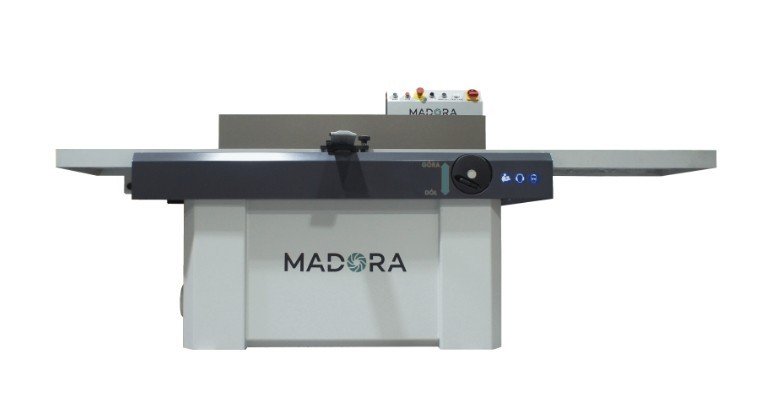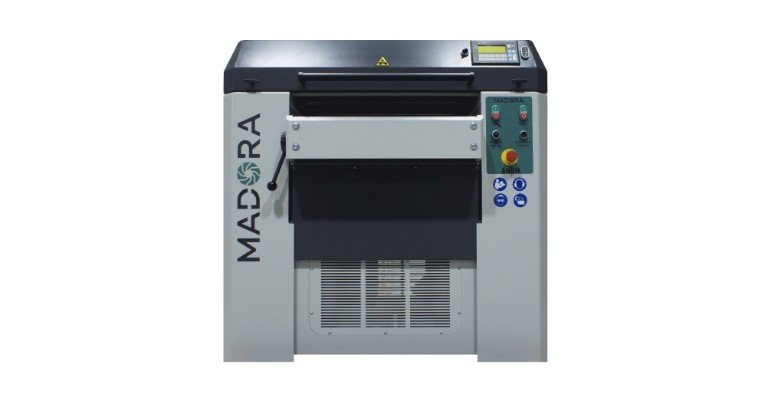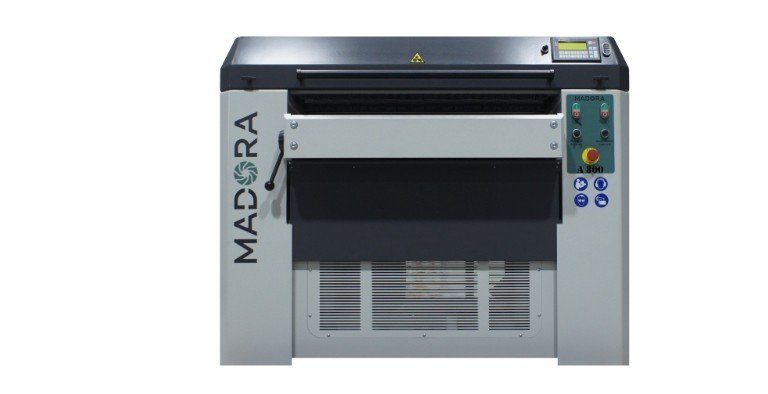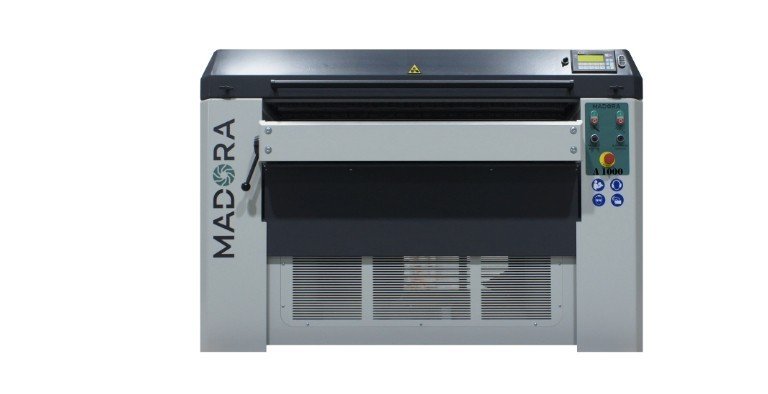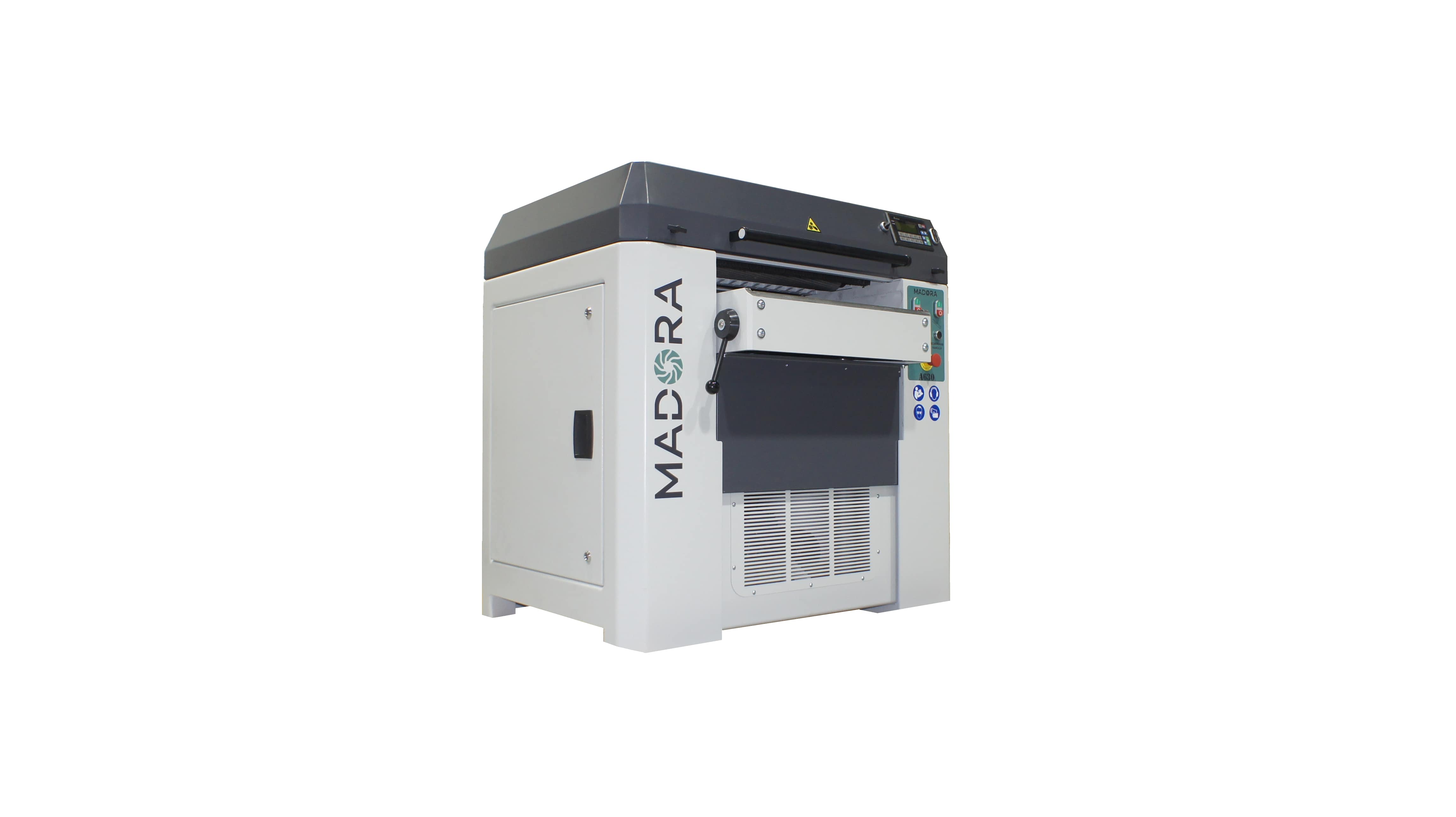A double-sided planer is a machine designed to process two opposing surfaces of wood simultaneously. This makes the planing process much faster and more efficient, resulting in increased productivity.
The advantages of the double-sided planer are:
- efficiency – simultaneous planing of two surfaces reduces machining time;
- precision – thanks to the precise settings, the machine ensures even planing, resulting in perfectly smooth and even surfaces;
- time-saving – eliminates the need to carry out the planing process twice;
- versatility – ability to process a wide variety of wood components, from boards to structural beams.
Grinding machines
As an experienced manufacturer, Madora presents an extensive range of grinding machines and woodworking machines – indispensable in any carpentry or furniture workshop. These machines are designed to optimise machining performance and precision, which is key to achieving high quality finished products.
We offer wood thicknessers, which are excellent tools for high-level processing. These devices are used to give the machined wooden elements the appropriate thickness and shape, which allows for easy preparation of boards with identical dimensions. Thicknessers can be used for both softwood and hardwood, including beech or hornbeam. They are used in home workshops and in large-scale production facilities. We also particularly recommend wood planing machines, which are used to smooth the surface of wooden material, removing dangerous splinters and preparing the raw material for further processing. These machines are easy to operate and guarantee fast and precise work. Like thicknessers, planer machines are designed to work with both softwood and hardwood, making it possible to smooth boards, planks, slats and beams. They make the process of producing countertops or furniture much faster.
Woodworking machines
The machines offered by our company can be used not only for working with metal components – the equipment also cover woodworking machines, which allow full processing of this type of raw material. As a result, they are used by carpentry workshop owners to create the components necessary for the construction of various types of furniture.
What specific types of work do woodworking machines allow? They are mainly used to create perfectly smooth surfaces. With these, as with the deburring machine, it is possible to carry out further work involving, for example, painting or covering parts with varnish or a layer of veneer. If you are interested in purchasing this type of equipment, please do not hesitate to contact us.
Double-sided planer
The double-sided planer is an advanced machine that consists of many precision-engineered components. Its design allows two opposing wood surfaces to be processed simultaneously, significantly speeding up the production process and increasing efficiency. The key components of the double-sided planer are the planing shafts, which are located at both the top and bottom of the machine. These shafts are electrically driven and can be switched on separately, allowing single-sided or double-sided machining as required. The planing shafts are responsible for the precise removal of the wood layer, enabling perfectly smooth surfaces.
Construction and principle of operation of the two-sided planer
The insertion shaft is located in front of the planing shaft and has the task of transporting the board to the planing tool. Its operation is assisted by pawls that prevent the material from backing out. This ensures smooth operation and operator safety. Once the material has been processed by the planing shaft, it is transferred to the outfeed shaft, which takes it out of the machine. As a result, the entire machining process with the two-sided planer is automated and does not require constant attention from the operator. The pre-top is used to lay the material prior to processing and is adjustable, allowing the height to be adapted to the thickness of the processed timber.
Slip or pull rollers located under the top help to move the material smoothly through the machine. Their height can also be adjusted to suit the different types of wood being worked on, both soft and hard. Pressers are also important components of the double-sided planer. Their function is to press down on the workpiece, preventing it from moving during the work. This results in more precise machining and perfectly smooth and even surfaces after planing. Double-sided planers therefore not only provide high productivity, but also high machining quality. This makes them an indispensable tool in any carpentry or furniture workshop.
How does a double-sided planer work?
The operation of the double-sided planer is based on the simultaneous removal of a layer of wood from both sides of the workpiece. The timber is fed into the machine by special transport rollers, which ensure an even and stable feed. As the material passes through the machine, blades rotating at high speed remove excess wood, creating smooth and even surfaces. This makes the planing process not only faster, but also more precise compared to traditional machining methods. Double-sided planers can be equipped with additional features such as chip and dust extraction systems, which significantly improves working comfort and cleanliness of the workplace.
What can be machined with a double-sided planer?
Double-sided planers are extremely versatile and can be used to process a wide variety of wooden components. They are ideal for planing boards, slats, structural beams and other components of varying thickness and width. Thanks to the possibility of adjusting the operating parameters, these machines can be used for both soft woods, such as pine or spruce, and hard woods, such as oak or beech. Double-sided planers are not only used in large production facilities, but also in smaller carpentry workshops. They prove their worth wherever precision and efficiency are crucial to the quality of the final products.
What to look for when choosing a double-sided planer and woodworking machines?
The selection of a double-sided planer and other woodworking machines requires consideration of several key factors that can significantly affect the efficiency and quality of the work. First and foremost, it is worth paying attention to engine power. An engine with sufficient power ensures smooth and efficient operation of the machine. This is particularly important when working with hardwoods. The higher the power, the easier the machine can cope with more difficult materials, resulting in better results and longer machine life. Another important aspect is the precision of the adjustment of operating parameters. The ability to adjust the planing depth and feed speed allows the machine to be adapted to the specific needs of a project. This makes it possible to achieve perfectly smooth and even surfaces.
Another important criterion when choosing a woodworking machine is its design and stability. A robust construction of a machine not only ensures durability, but also minimises vibration during operation. This has a direct impact on machining precision. It is also worth looking at chip and dust extraction systems. A good quality extraction system not only keeps the workplace clean, but also improves operator comfort, particularly important in longer production cycles. Ergonomics of the machine is also important, i.e. the ease of access to the controls and the intuitiveness of the interface, which can have a significant impact on the efficiency of work and safety of use.
Last but not least is the versatility of the machine. It is worth investing in a machine that offers a wide range of applications and can be used to process different types of wood and elements of different dimensions. We offer multifunctional machines that combine the functions of a thicknesser and a wood planer machine. This increases production flexibility and allows for more diverse projects. In the case of double-sided planers, the ability to change settings quickly and ease of maintenance are also important factors that can influence the purchasing decision. A well-chosen machine not only increases productivity, but also contributes to the high quality of wood products.


